
The beauty of macro photography

How often can you say that to take photographs of your subjects you have to lie down on the ground? Well, how else would you be able to get a ground-level perspective of the life of an ant, or peer in close to fully appreciate the form of a spider? Most people don’t. We walk past and step over these creatures without a second thought of the incredible and alien-like world all around us.
Macro photography is an essential part of wildlife photography, shining a spotlight on the smaller lifeforms that are not only essential to our ecosystem but, quite simply, are downright incredible to photograph! Whether a beginner or a seasoned professional, here are some tips and pointers to ensure that you get the best results from your macro photography.

SPEED
A good, sound rule: the smaller your subject is, the faster it will move. You can get away with low shutter speed for elephants, but with birds, you have to crank it up quite a bit more, and the same goes for the phenomenal insect kingdom.
Ants crawling across a tree branch might not seem fast at first, but when you get in close, your perspective changes and trying to capture one in sharp focus can be very tricky. Throw your lens in front of dragonflies, bees or grasshoppers, and again, you need to be quick with your reactions and have a very high shutter speed to freeze the moment. Of course, this requires a good amount of light, which takes us nicely to the next point…
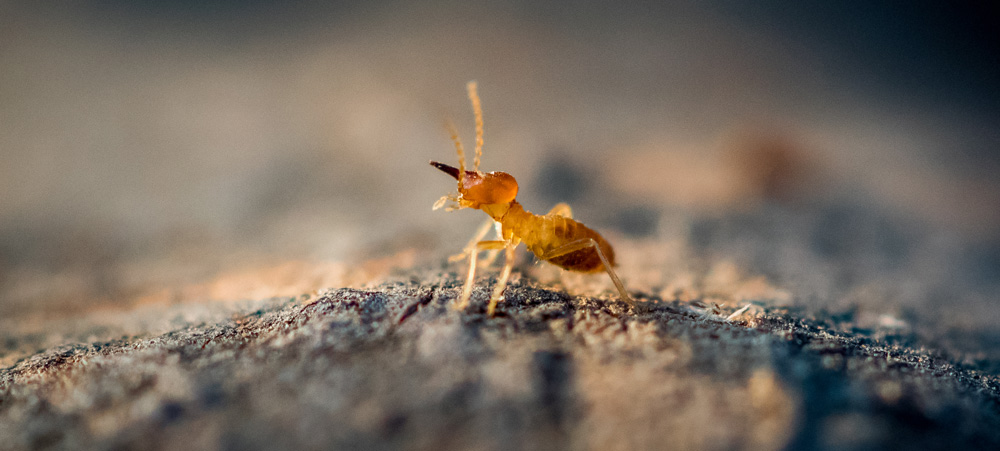

LIGHT
Light is your best friend, though a simple spot of shade or wisp of cloud can dramatically alter your shot. Sunny days are ideal because insects tend to be more active in the heat, and you can maintain optimal camera settings.
However, always keep an eye out for incoming clouds and shadows – in particular, your own or of others that will cast a shadow over your subject. Flash rings are great for still life, but natural lighting for wildlife is infinitely preferred so as not to flatten your subject with an overabundance of a front-facing light source.

FLEXIBILITY
Tripods or monopods are fantastic for stabilising your camera, but when it comes to wildlife, forget about it. You need to be flexible and quick! A butterfly isn’t going to sit waiting for you to adjust your tripod legs, so you need to practise holding your camera steady, getting into comfortable positions quickly and controlling your breathing. Composure, patience and plenty of practice is the trick.
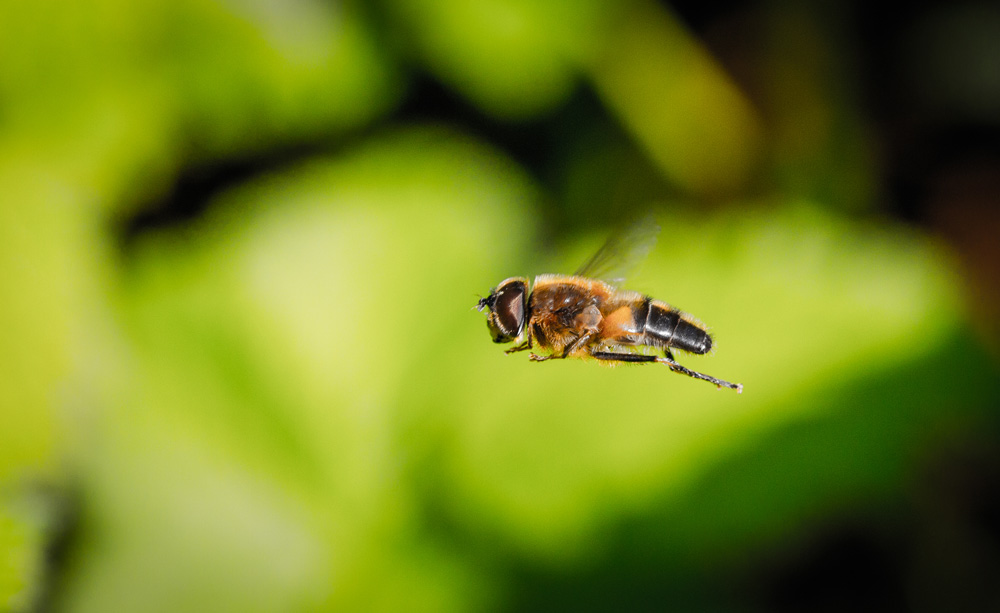

APERTURE
Most people, when starting macro photography, jump straight to their shallowest depth of field, an f2.8 or f1.4, but this is unnecessary and can become a hindrance. First and foremost, that shallow depth of field, when used so close, will often slice your subject into three sections with the plane of focus being minuscule.
You want to show off the subject in its entirety and not just a segment, so instead try an f8 or even an f16 to give a broader depth of field to your photography.
Your background is often so far away comparatively that it will remain nicely blurred, but it means you’ll get more of your subject in focus and allows more breathing room if it is moving. Of course, this once again links into the lighting of the scene: the lighter, the better.
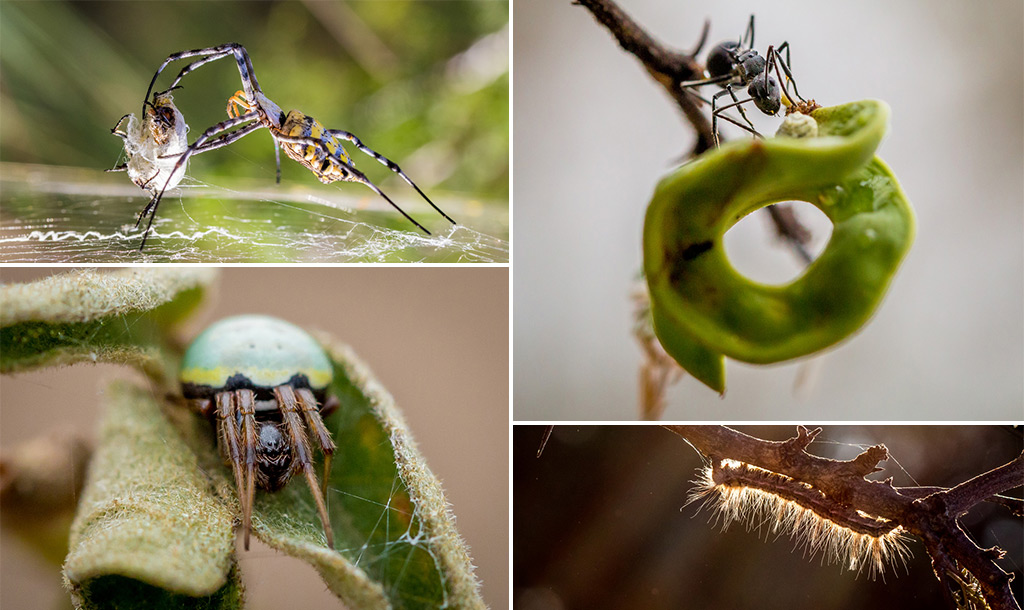
PERSPECTIVE
This is the one crucial point that I’m adamant about getting across to any photographer I’m teaching macro to.
When photographing a lion, would you photograph it from above at a 45-degree angle? Of course not, you’d want to get in front of it and be as low as possible to give it a powerful and grandiose appearance – and the same applies here.
Shooting something from above can make it seem inferior, and this is the opposite of what we want to do. So getting down to ground- or eye-level is always preferential.
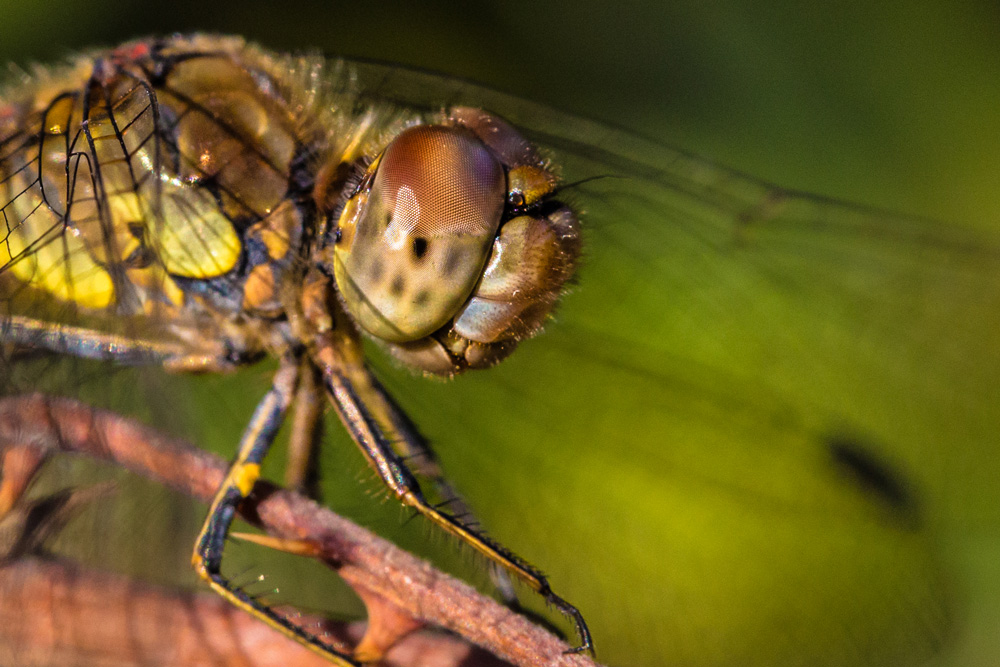
NOT JUST FOR WILDLIFE…
Macro photography, beyond wildlife, is a great way to explore and represent other subjects. Dewdrops clinging to spider webs, the texture of tree bark, or the vein structures of a backlit leaf can result in absolutely stunning photographs.
Commercially speaking, the details of a wedding dress or engravings on engagement rings are always better represented through the medium of macro, blurring out the unnecessary background and bringing out the artistry.
Whether you live out in the African bush or a bustling city, there are opportunities everywhere for interesting and versatile photographs. The great thing about today’s digital technology is that you don’t even need a special camera or lens to get involved – most cameras on phones have an impressive ability to focus on subjects up close and personal.
It’s all down to how you use it, but remember, by getting down and dirty, you’ll raise the love for all things often ignored. ![]()

ABOUT THE AUTHOR
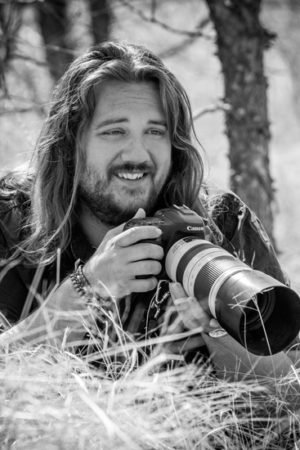 Sam Cox originally studied filmmaking, earning a BA Honours degree in filmmaking before moving his sights onto photography. Travelling to Africa since 1999, his passion for wildlife quickly drew him to focus on photographing the diverse wildlife the continent has to offer and has seen his images published online with National Geographic and Africa Geographic, with printed publications in Travel Africa Magazine and BBC Wildlife Magazine.
Sam Cox originally studied filmmaking, earning a BA Honours degree in filmmaking before moving his sights onto photography. Travelling to Africa since 1999, his passion for wildlife quickly drew him to focus on photographing the diverse wildlife the continent has to offer and has seen his images published online with National Geographic and Africa Geographic, with printed publications in Travel Africa Magazine and BBC Wildlife Magazine.
Wanting to put aside work photographing weddings and events in the UK for a life and career in Africa, he dipped his toes into the water by volunteering with African Impact in Zimbabwe and South Africa – using his camera skills to aid in conservation efforts. Since then, he has joined the team at African Impact in the Greater Kruger National Park as the Photography Coordinator, teaching wildlife photography to international volunteers while also contributing to conservation and local community-based projects.
To comment on this story: Login (or sign up) to our app here - it's a troll-free safe place 🙂.![]()




